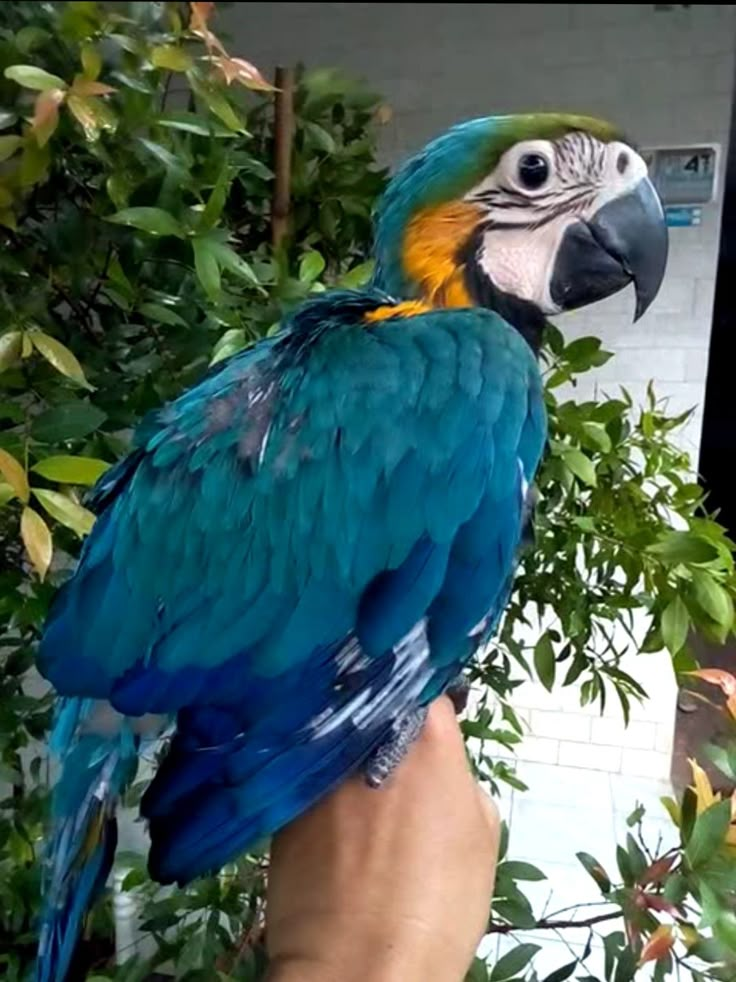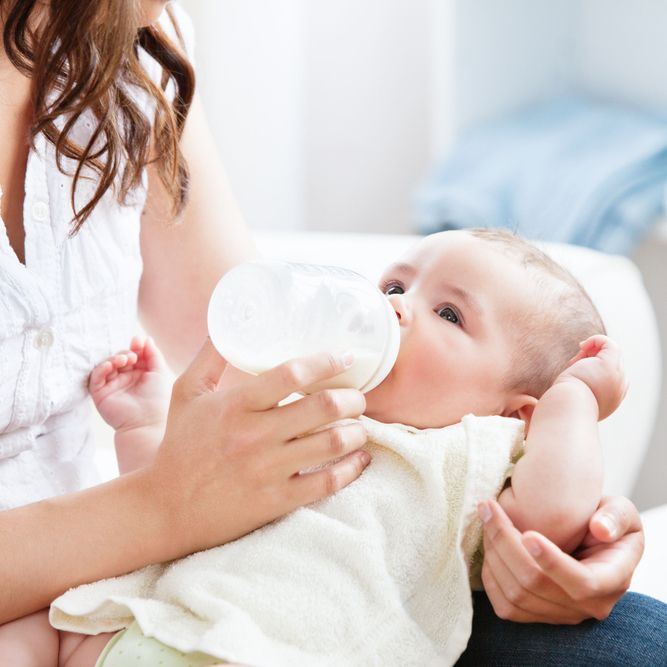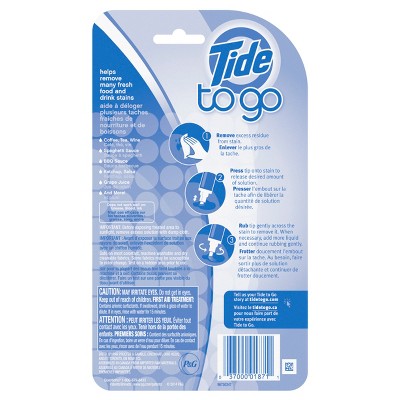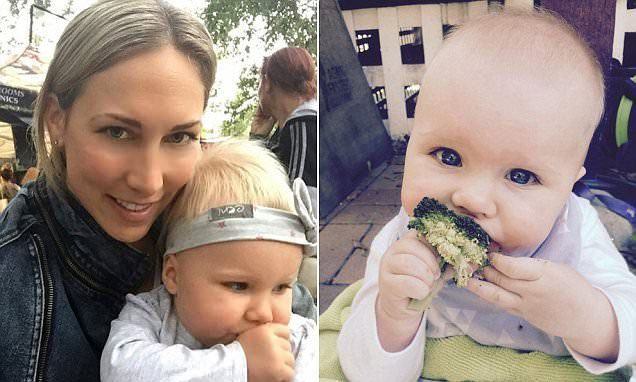Macaw baby feeding
How to Care for Newborn Macaw Chicks
By Jean Marie Bauhausi John Foxx/Stockbyte/Getty Images
If you're bringing a baby macaw home for the first time, it should have been fully weaned before it was allowed to leave the breeder. However, if you are breeding macaws, or have a pair who have mated, you'll find yourself needing to provide care for the chicks. Hand feeding macaw chicks is not for the novice, as they are a difficult bird to properly hand feed from a young age. If you find yourself in a situation where you have no choice, it's best to consult a vet or a reputable macaw breeder before trying to hand feed newborns.
Help the Parents
If possible, it's best to allow the parents to feed and care for babies for the first two weeks. During this time, feed both parents a variety of nutritious foods such as raw vegetables and whole grains so they can pass good nutrition on to their chicks. Letting newborn chicks be fed by their parents not only ensures that they get the necessary enzymes and intestinal flora, but it's also better for their psychological development as it helps to teach them proper bird behavior. However, if the parents aren't feeding or properly caring for the chicks, you should remove them and begin hand feeding right away. Otherwise, for the sake of taming the chicks and preparing them to be good pets, begin feeding them by hand after 15 to 19 days.
Preparation
Prepare for hand feeding and caring for baby macaws by gathering the necessary tools. These include a scale for keeping track of each baby's weight, an incubator to keep the babies warm and soft bedding material such as cotton rags. Make sure the rags don't have any loose threads or loops that can snare the chicks. For feeding, you'll need pipettes for giving formula to very young chicks, and a spoon or syringe for older chicks. You'll also need antibacterial soap and a safe place to clean and disinfect your tools and hands, as well as cotton swabs for gently cleaning spilled formula off of little bird faces and bodies. Before handling the chicks, it's also important that you trim your nails close and remove rings to avoid injuring their tender skin.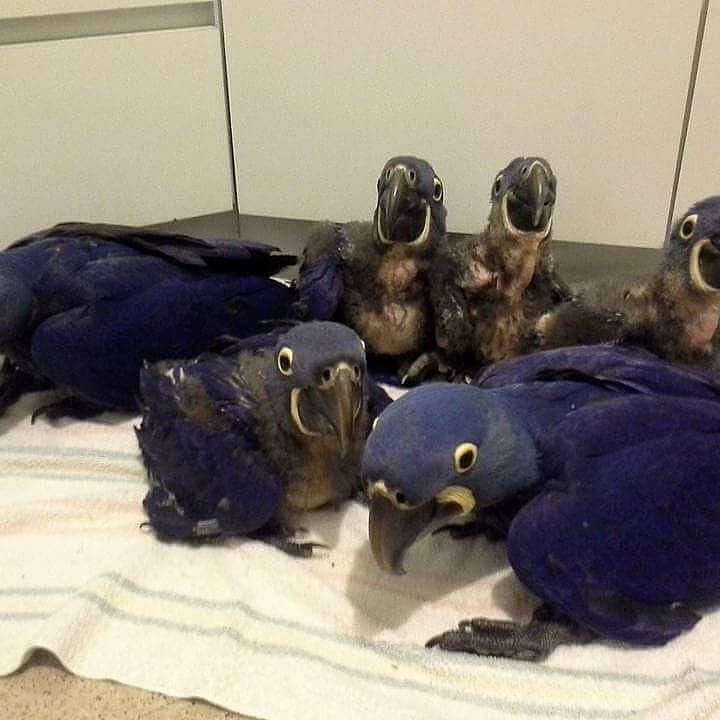
Hand Feeding
Before feeding a chick for the first time, it's a good idea to observe a feeding done by the parents so you can see how the chick's stomach looks when it's been fed the correct amount. This will help you gauge when the chick is full. Use a safe and comfortable container for holding the chick during feeding so that both of your hands are free. Rather than microwaving formula, prepare it with hot water. If you're feeding newborn chicks, the formula should be thin, but for older chicks it should be about the consistency of applesauce. Newborn macaws need to be fed about as often as a newborn human baby, but by two weeks they only need to eat about every four hours -- including overnight. Older chicks can have small amounts of strained meats and mashed fruits and vegetables added to their formula.
Weaning
At about 80 days of age, macaw chicks will start fledging -- that is, preparing their bodies to fly -- and are ready to be weaned. Begin weaning by offering formula in a bowl or container and allowing them to feed themselves. In the beginning you might need to continue hand feeding on occasion to make sure they get enough, but don't be alarmed if the chick loses weight. It's normal for the chicks to slim down in preparation for their first flight. Once they learn to feed themselves formula, introduce the adult diet, which is the same type of foods you've been feeding the parents.
In the beginning you might need to continue hand feeding on occasion to make sure they get enough, but don't be alarmed if the chick loses weight. It's normal for the chicks to slim down in preparation for their first flight. Once they learn to feed themselves formula, introduce the adult diet, which is the same type of foods you've been feeding the parents.
References
- Macaw Pediatrics: Baby Care Suggestions, Hatching Through Weaning.
- Animal-World.com: Macaw Care
- AllMacaws.com: Bringing Home Baby
Photo Credits
Writer Bio
Jean Marie Bauhaus has been writing about a wide range of topics since 2000. Her articles have appeared on a number of popular websites, and she is also the author of two urban fantasy novels. She has a Bachelor of Science in social science from Rogers State University.
How to Take Care of Baby Macaws (With Pictures)
Any Macaw purchased from a breeder is fully weaned, so no special care practices are necessary.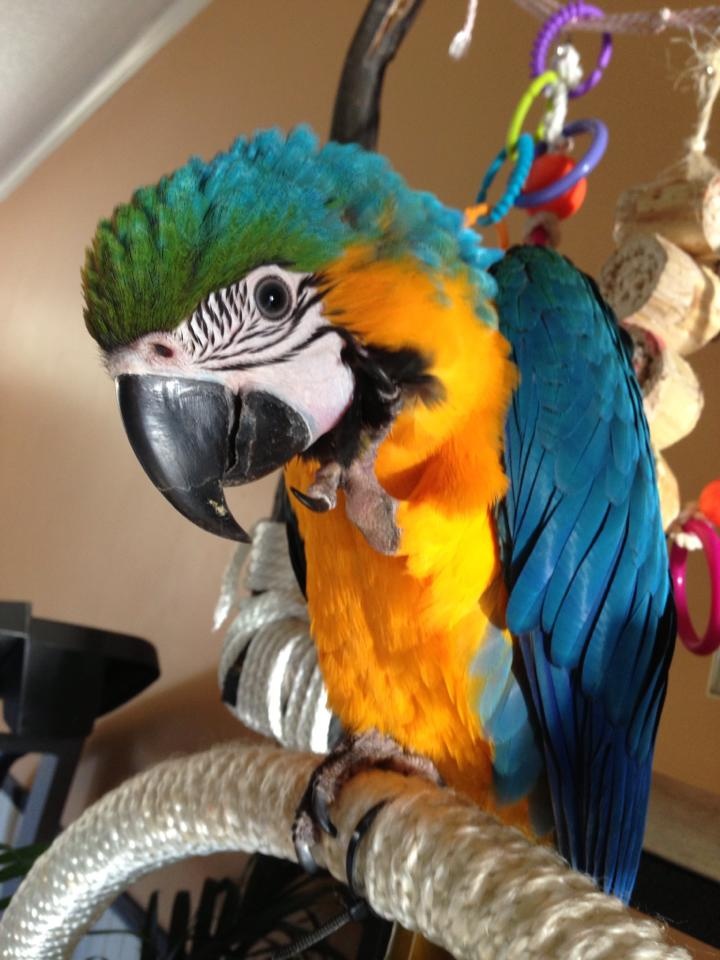 However, if you are planning to breed Macaws or your set of Macaws have unexpectedly bred, you must learn the ins and outs of taking care of babies because their needs are different from birds that are weaned and those that have reached adulthood.
However, if you are planning to breed Macaws or your set of Macaws have unexpectedly bred, you must learn the ins and outs of taking care of babies because their needs are different from birds that are weaned and those that have reached adulthood.
The good news is that it is entirely possible to raise a baby Macaw into a healthy and happy bird. The bad news is that it’s not easy. Hand feeding is a big part of the process, which can be tough to master overall. But with a little direction and a great deal of commitment, you can succeed when all is said and done. Here is a guide to caring for baby Macaws that should make your job as the caretaker an easier and more pleasurable experience.
First Things First: It’s All About the Parents
Image Credit: AKKHARAT JARUSILAWON, ShutterstockIf a baby Macaw’s parents are in the picture, the parents should be doing most of the work when it comes to caring for the baby, especially during the first 2 weeks of life. It is important to offer the parents a larger amount of food in a wider variety. Provide fresh veggies, like celery, carrots, and spinach, and fruits and berries, like melon, banana, and blueberries. Whole grains, including oats, are also a good idea.
Provide fresh veggies, like celery, carrots, and spinach, and fruits and berries, like melon, banana, and blueberries. Whole grains, including oats, are also a good idea.
This extra food will be used by the parents to feed their new baby, which is why the types of food offered daily should greatly vary in terms of nutrition, flavor, and texture. The parents will regurgitate the food and feed it to the baby, which provides the baby with natural intestinal enzymes that help strengthen its digestive system.
In addition to extra food, it is a good idea to provide more bedding in the habitat so the parents can ensure warmth and comfort for their babies. With these extra tools and resources in place, parent Macaws will do most of the legwork. However, supervision throughout the day and regular interactions with the parents and baby are necessary.
Caring for a Baby Macaw on Your Own
If a baby Macaw’s parents are not around, you must take on the role of primary caretaker yourself.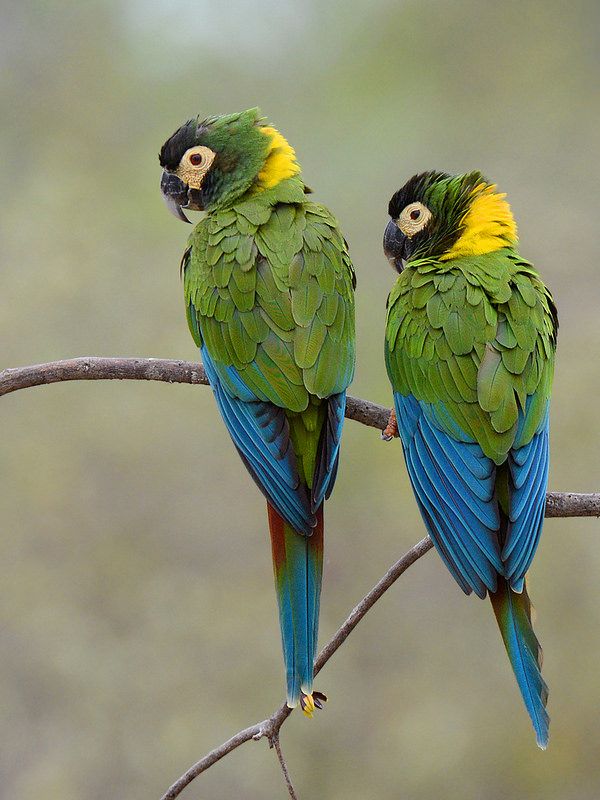 The biggest aspect of caring for a baby Macaw is feeding. Baby Macaws cannot feed themselves, so they will rely on you for every morsel of food that they consume. To start, you should gather all the tools necessary for the proper hand feeding of baby Macaws.
The biggest aspect of caring for a baby Macaw is feeding. Baby Macaws cannot feed themselves, so they will rely on you for every morsel of food that they consume. To start, you should gather all the tools necessary for the proper hand feeding of baby Macaws.
Here is what you will need:
- Kitchen Scale: This is used to weigh a baby Macaw as they age to determine whether they are getting enough food to gain weight as they grow.
- Incubator: This helps keep baby Macaws warm during cold days and throughout the night.
- Bedding Material: Cotton cloths, small fluffy blankets, and old sweaters provide comfort for babies.
- Pipettes and Syringes: These are used to administer specialty formula to babies and chicks until they can eat whole foods on their own.
- Antibacterial Soap: This should be used before every physical interaction with a baby to ensure that they do not get exposed to germs.
View this post on Instagram
A post shared by Ara Macaws (@aarnoosha_aarsham_aarta)
The Process of Hand-Feeding Baby Macaws
You will need both your hands to feed a baby Macaw, so the baby should be placed in a small, soft container, such as a bowl lined with a soft towel, so it can reach out for food without the risk of falling over or injuring itself. Once the baby is situated for feeding, prepare the baby’s formula using boiled water and the directions that are included with the formula product.
Fill a pipette or syringe with the formula, and then offer it to the baby by placing the opening of the pipette or syringe over the baby’s open mouth and then lightly dripping the formula into its mouth. You will know that you are feeding the baby enough if it is gaining weight daily. If weight gain is not apparent, increase the amount of formula being offered at each feeding.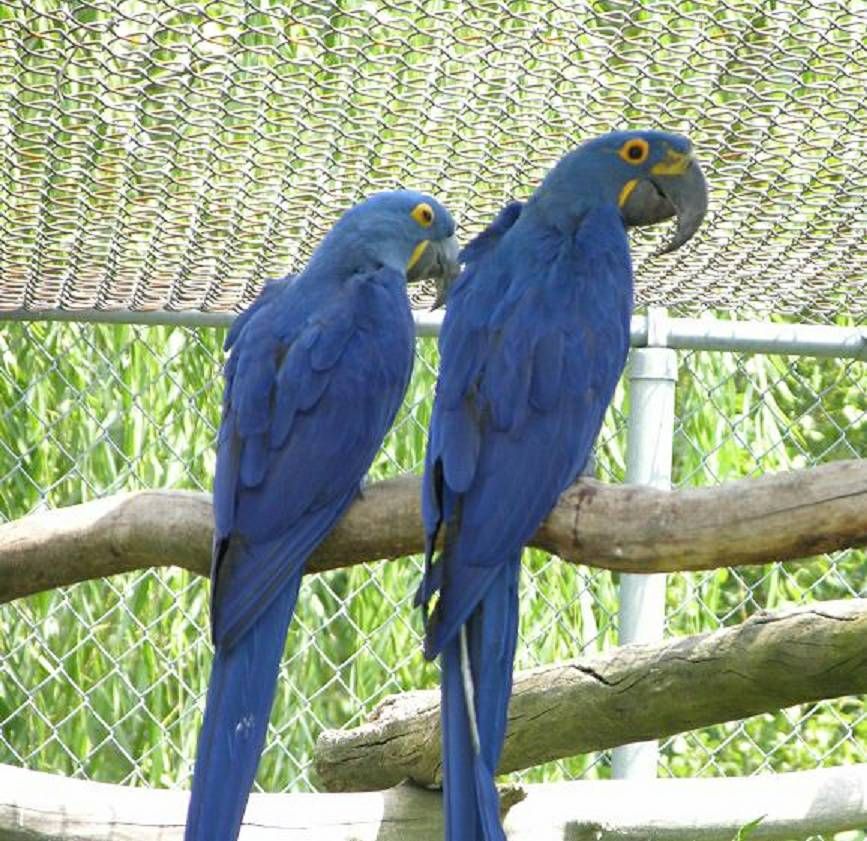
When and How Often to Feed Baby Macaws
Newborn Macaws should be fed every 2 hours, even throughout the night, so multiple human caretakers should consider taking shifts to meet this need without putting too much pressure on any one person. Once the newborn becomes a chick (at about 2 weeks of age), it only needs to be fed once every 4 hours, including throughout the night.
View this post on Instagram
A post shared by Alex The Macaw (@alexthemacaw)
Weening Baby Macaws
At about 3 months of age, baby Macaws are ready to be weaned from hand feeding. This means that the bird can learn to start pecking at whole food and digesting it on its own, and the formula can be eliminated. However, the weaning process should be a slow one. Start by offering formula in a bowl rather than through a syringe or pipette. You may still need to hand-feed the bird for a couple of weeks between bowl feedings to ensure that it is getting enough calories and nutrients.
You may still need to hand-feed the bird for a couple of weeks between bowl feedings to ensure that it is getting enough calories and nutrients.
Once the bird can easily eat formula from a bowl and finishes every meal that is offered to them, you can start to introduce the same types of foods that an adult Macaw eats, such as seeds, berries, tropical fruits, veggies, and whole grains. A commercial parrot mix should be offered as the main part of any meal in a given sitting.
You May Also Like: How Much Does a Macaw cost? (2021 Price Guide)
Working With a Veterinarian
It is extremely important to work with a veterinarian when caring for a baby Macaw to minimize the risk of making mistakes and to ensure that you are prepared to handle and problems that might arise, like the refusal of a baby to eat any formula for whatever reason. A veterinarian will provide guidance and encouragement so you do not feel so alone throughout the hand-feeding process. Regular veterinarian checkups should take place throughout the entire life of a Macaw, from beginning to end.
Regular veterinarian checkups should take place throughout the entire life of a Macaw, from beginning to end.
Featured Image Credit: VCoscaron_Shutterstock
What to feed rat pups from birth, the diet of rodents from 1 month
The appearance of newborn rat pups in the house makes adjustments not only to the life of the mother rat, but also to her owners. In order for the babies to grow up healthy, the owner must provide them with everything necessary, including good nutrition. Therefore, novice breeders definitely need to know how to feed rat pups from birth to full maturity.
Contents
Preparation and feeding of newborn rat pups
Sometimes it happens that a rat dies after a difficult birth or refuses to feed its offspring with breast milk. Then the owner should come to the aid of the cubs. Self-feeding of rat pups during the first days of life is a rather tedious and time-consuming process, so you will need to be patient. You need to feed the babies in a strictly established sequence:
- First, you need to take each rat in turn in your hands and massage the lower abdomen with a cotton pad soaked in warm water.
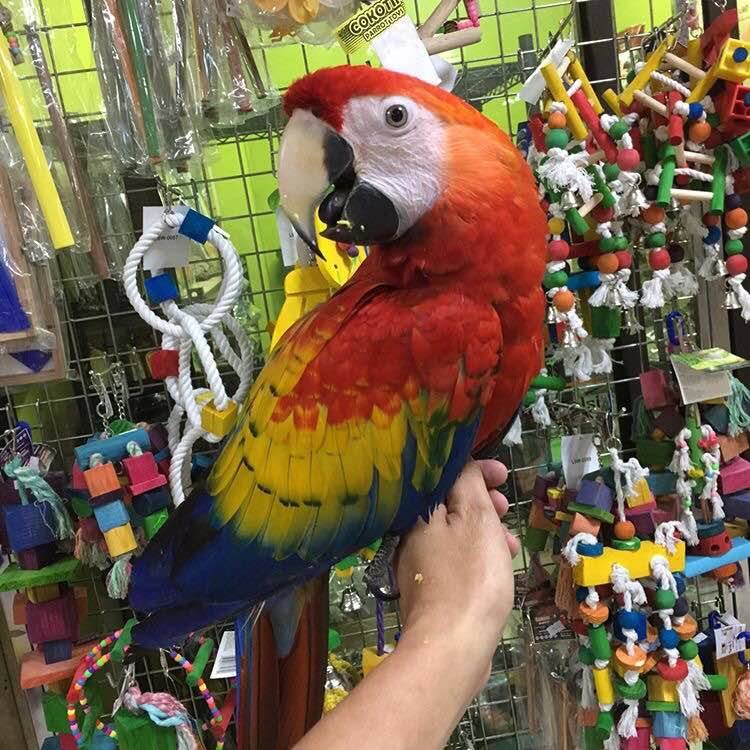 This is necessary so that the kids go to the toilet in a small and big way. Excrements should be immediately removed with a regular napkin.
This is necessary so that the kids go to the toilet in a small and big way. Excrements should be immediately removed with a regular napkin. - Next, you need to fill the syringe with warm goat's milk (preferably homemade) and put on it a subclavian catheter cut to 1-1.5 cm. The fatter the liquid, the more willing the baby will eat.
- The cut end of the tube is inserted into the mouth of the rat pup 2-3 mm. Then you need to gently, as slowly as possible, press the plunger. For the first time, the cub will spit out milk and champ, then it will get used to it. Over time, babies will eat more and more actively, so you will need to restrain them a little so that they do not choke.
From the second day, regular infant formula marked "1" can be gradually diluted in goat's milk. The amount of dry powder should be 2 times more than indicated in the preparation instructions on the back of the package.
When the offspring's eyes open, instead of infant formula, goat's milk can be mixed with cereals that are allowed for children from 4 months of age.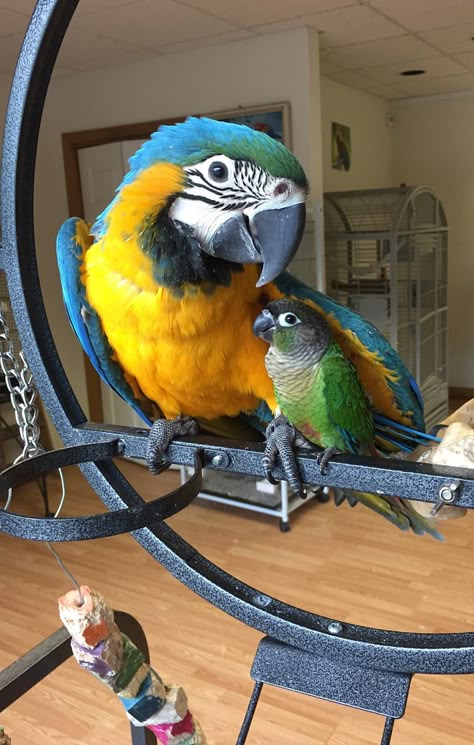 Most of all, rat pups like the taste of buckwheat with the addition of dried fruits.
Most of all, rat pups like the taste of buckwheat with the addition of dried fruits.
Just before feeding, it is recommended to drop a drop of warm milk into each rat's mouth. This will prepare the babies for eating and also prevent the formula from being too greedy.
Rats are social animals. Adult females have a well-developed maternal instinct. Therefore, it makes sense to look for a nurse for the kids. Nevertheless, rat milk for cubs is much more useful than any, even the highest quality mixture. If you have a rat in mind, whose rat pups have just died, you can take it to your home. She will feed the newborns with pleasure.
You can, on the contrary, take your babies for temporary residence to a lactating female. In this case, before settling the brood, it will be necessary to temporarily remove the mother rat from the cage and rub the “brand new” rat pups with sawdust. Then the female will take them for part of her own brood and will actively feed them.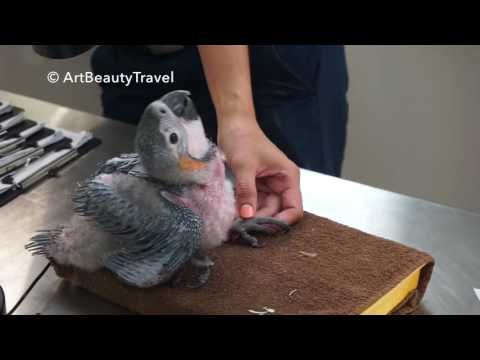 Lactation is well developed in rats, so there is enough milk for everyone.
Lactation is well developed in rats, so there is enough milk for everyone.
Pups diet from 1 month old
After reaching the age of one month, rat pups can be gradually offered adult food. It is necessary to introduce new dishes carefully, gradually increasing the dose. By the age of 5 weeks, formula feeding is completely replaced by a complete rat diet. For normal growth and development, rat pups need a balanced and natural diet.
Grain food
Grain is the basis of the diet for all rodents. Cereals are necessary to maintain the energy and vitality of the animal. Young rat pups are recommended to offer:
- wheat;
- oats;
- rye;
- millet;
- buckwheat;
- brown rice
You can make your own grain mixture or buy ready-made specialty food from a pet store. When using a purchased product, you need to pay attention to its quality. When feeding young animals, it is better to give preference to premium and super-premium grain feeds.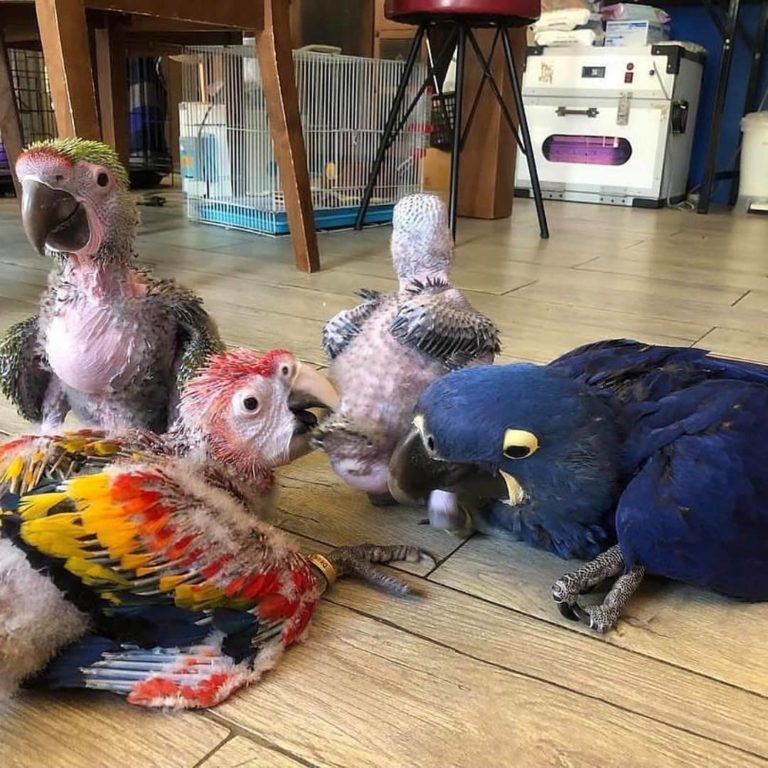
Juicy food
Juicy food is an indispensable source of vitamins, minerals and fiber, which has a beneficial effect on the digestive system. Upon reaching the age of one month, rat pups should be gradually offered:
- vegetables - pumpkin, broccoli, carrots, marrows;
- fruits - apples, pears, avocados, bananas;
- berries - raspberries, strawberries, currants;
- greens - parsley, celery, lettuce, dill;
- grass - dandelion, plantain, nettle.
Vegetable food is very useful for rodents. However, some succulent feeds can cause gas, bloating, and diarrhea in young animals.
In order to avoid unpleasant surprises, it is recommended to introduce fruits, berries and vegetables into the diet of fluffies in the form of puree. You can buy baby food or cook your own meal. If no negative reactions are observed after 3-4 days, fresh succulent food can be given.
Food of animal origin
Animal food is rich in protein, vital for a growing organism. Therefore, it is necessary to introduce more meat and sour-milk dishes into the menu of rat pups. The following products will be useful for pups:
Therefore, it is necessary to introduce more meat and sour-milk dishes into the menu of rat pups. The following products will be useful for pups:
- cottage cheese;
- kefir;
- ryazhenka;
- curdled milk;
- lean meat - beef, chicken, turkey;
- fish;
- seafood - shrimp, crabs, squid.
Animal food is heavy enough for a rat's stomach. Therefore, when compiling a menu for rat pups, it is necessary to focus on the fat content of foods - the lower it is, the better for kids.
1-2 times a week it is recommended to give the younger generation a drop of fish oil. This will increase the immunity of babies, strengthen their musculoskeletal system, and the fur of rat pups will pleasantly shimmer under the sun.
Treats
In addition to the main food, it is recommended to occasionally pamper rat pups with treats. For example:
- dried grasshoppers or worms;
- cereal biscuits;
- carrot biscuits;
- nuts and seeds;
- herbal pads;
- rolled peas.

You can buy the listed treats at the pet store, and if you wish, you can cook it yourself. Also, apple, birch, willow twigs should be periodically left in a cage with rat pups. Such delicacies are not only tasty, but also help grind down actively growing teeth.
Peculiarities of feeding rat pups
To avoid adverse effects during or after feeding rat pups, it is necessary to remember the important features of feeding animals. Small rodents should be fed taking into account the following recommendations:
- For one feeding, a newborn baby eats up to 0.3 ml of milk. From the fifth day of life, the volume of nutrition increases to 0.5 ml. From the 10th day, the amount of the mixture increases by another 2 times. Relying only on the rat's appetite is not worth it - the fact that the cub has eaten will be indicated by a wide longitudinal white strip on a transparent tummy. It shows through the stomach filled with milk.
- If a little rat is choking on milk, you need to forcefully pinch his nose so that he dies.
 He must sneeze until all the milk has flown out of the nasal passages. If the reception did not help, you can move on to tweaks for the back of the body. It's more painful, but more effective. The main thing is to prevent suffocation of the baby.
He must sneeze until all the milk has flown out of the nasal passages. If the reception did not help, you can move on to tweaks for the back of the body. It's more painful, but more effective. The main thing is to prevent suffocation of the baby. - During greedy suckling, air is often swallowed. This leads to bloating and severe pain. In such a situation, you need to stop feeding and give the baby with a catheter 0.02-0.03 ml of any drug containing simethicone. For example, Bobotik or Espumizan.
- Upon reaching the age of 7 days, the gums of rat pups should be carefully examined for the appearance of a whitish coating - a sure sign of thrush. If a problem has appeared, it is necessary to treat the oral cavity with children's antifungal drugs - Candide, Nystatin, Fluconazole. For the prevention of thrush from the first days of life, it is recommended to give the cubs a drop of Biovestin, a liquid probiotic.
Also, remember that the remains of the mixture and any other food must be removed from the cage immediately after feeding.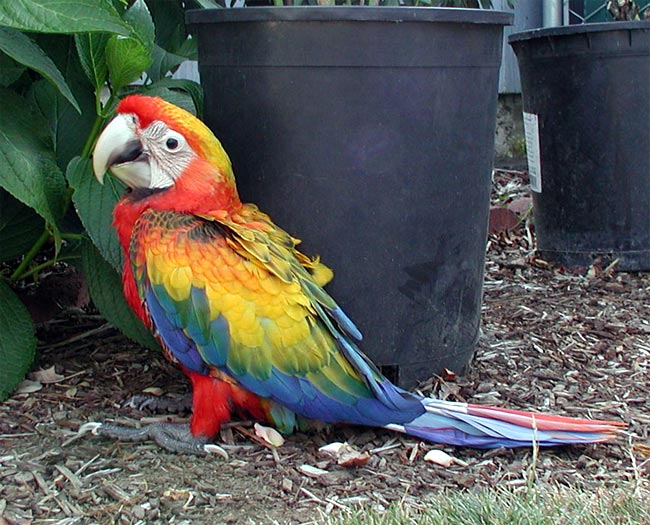 Otherwise, rat pups can choke on dried food, which often leads to asphyxiation.
Otherwise, rat pups can choke on dried food, which often leads to asphyxiation.
What not to give
Rat owners often try to pamper the younger generation with something delicious. However, most delicacies from the human table are dangerous for rodents, especially for babies. Under a categorical ban are:
- sugar and sweets - sweets, milk chocolate, pastries, ice cream, condensed milk;
- fatty meat, lard;
- semi-finished products - dumplings, dumplings, cutlets;
- sausages, sausages, smoked meats;
- fast food;
- dried, smoked, dried fish;
- fresh milk;
- mushrooms;
- radishes, beans, turnips, rhubarb;
- carbonated drinks.
You also need to carefully control the pups so that they do not eat forbidden foods. Some plants, for example, can be deadly for rats - aloe, lily of the valley, dieffenbachia, geranium, carnation, lupine, tulip.
Replenishment in the rat family is a very important and responsible event. Knowing how to feed rat pups and how to care for them, even a novice breeder will be able to raise healthy and active offspring without any problems.
Knowing how to feed rat pups and how to care for them, even a novice breeder will be able to raise healthy and active offspring without any problems.
How do wild parrots raise their young?
03/26/2021
Not all wild parrots raise their chicks in the same way, but there are definitely similarities. I don't believe there are parrot chicks that aren't reared in the dark.
Of course, most parrots build nests in hollow trees, although there are exceptions. For example, the nest of a Quaker parakeet is built from twigs, twigs, and other materials placed on the branches of trees. In this design, you can place several couples with their own "apartments". These nests are continually added until the tree branches no longer support them and the housing estate falls to the ground. Other parrots, such as the red-fronted macaw and the Patagonian kennel, build their nests in depressions in rocks and along river banks.
Although parrots vary somewhat in where they build their nests, there is an important factor that most of them have in common: their parental devotion to raising their young until they become independent.
Most parrots are classified as K-selected species. We also fall into this category, which also includes elephants, whales and large primates. K-selected species tend to produce only a few offspring each year and provide these slowly developing offspring with intense parental care and protection.
Several types of parrots, including large cockatoos and macaws, take care of their young for a year or more. The intense care that parrots provide to their young includes much more than just feeding. Parrots are genetically programmed to teach their offspring the social and survival skills they need to be successful and therefore reach adulthood in order to continue the conservation of the species. Without these important lessons, the young parrot would hardly have survived.
How Baby Parrots Are Raised in the Wild
After hatching, baby parrots are essentially living clumps of putty that go through an "eat, poop and sleep" stage before they move around the nest.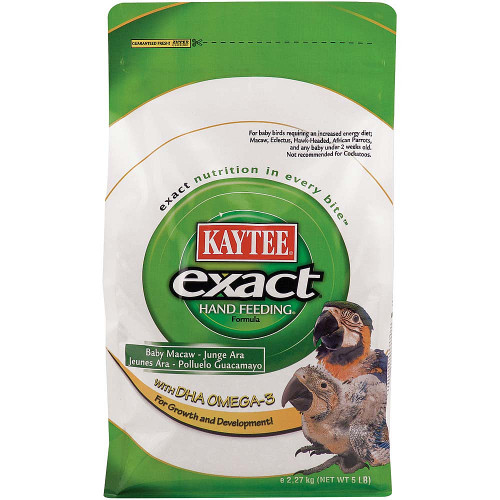 In most parrot species, the parent is with the young most of the time, if not all of the time. Parents seem to push babies a little to change their position. They keep them fed, warm, protected and clean, even if the nest may not be as clean. In fact, it may come as a shock to some people to see what wild parrot nests look like from the inside.
In most parrot species, the parent is with the young most of the time, if not all of the time. Parents seem to push babies a little to change their position. They keep them fed, warm, protected and clean, even if the nest may not be as clean. In fact, it may come as a shock to some people to see what wild parrot nests look like from the inside.
With parrot cubs there is a so-called "cloacal stretching". The cloaca is the universal vat at the end of the reproductive and digestive systems. Before the parrot chick's immune system is formed, there is a gland on the wall of the cloaca called the pouch of Fabricius. Essentially, this gland "swallows" air from the baby's environment to help develop their immune system. It is interesting to note that while a wild parrot nest is not as clean as we think it should be, it can actually create a stronger immune system.
I believe that people who breed and raise parrots should learn from how wild parrots raise their young. For years I have wondered why small parrots are raised in well lit aquariums, which is the opposite of the darkness of the tree holes in which wild parrots are raised. Physical contact with other chick(s) and wild parents is also important for their proper development and safety.
Physical contact with other chick(s) and wild parents is also important for their proper development and safety.
Testing their wings
As the young fledge, they move around the nest much more and eventually become interested in the light coming through the entrance to the nest cavity. They know that their parents come to the nest with food for them. They begin to hang out at the entrance to the nest and may even climb onto the nearest branch. Eventually, they begin flapping their wings and may even take flight before actually fledging. When the chicks are ready, the parents encourage them to leave the nest and fly with them.
I've never seen a wild parrot fledge, but I've seen home raised babies fledge, and it might be something like free for everyone. Perhaps the parrot instinctively flies, but it is clear to me that the art of flight has been learned.
The ability to learn through observation and interaction with parents and sometimes with other members of the family or pack is another feature of K-selected species.